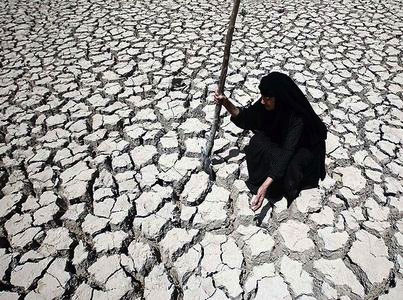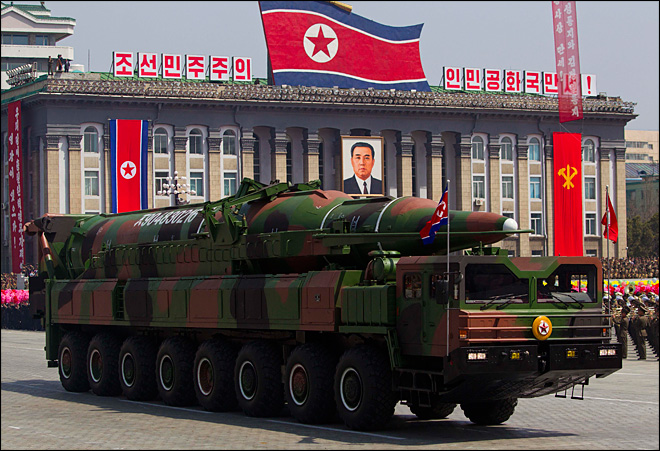As the devastation in Syria continues to escalate, most recently with the use of chemical weapons on civilians, the need for a greater understanding and a viable solution is becoming more and more critical. In order to truly understand the dilemma currently facing Syria, it is important to examine the underlying cause of the conflict, going beyond a political analysis. In regards to that, one variable in the outbreak of the conflict that has received relatively little attention is the influence of climate factors. Recently, the Washington Post released an interview it conducted with Francesco Femia, the co-founder of the Washington D.C. based Center for Climate Change and Security, which clearly noted its findings of a correlation between environmental stress and the Syrian conflict. It is important to note that changes in the environment did not cause the Syrian conflict, but instead was part of a complex list of factors which led to the outbreak of violence. Nevertheless, important lessons can be learned in Syria and other countries which have experienced conflict caused by climate change to better prevent future threats to human and international security.
Syria’s Climate Problems
The complexity of the Syrian situation cannot be understated. Syria is comprised of a large number of diverse religious and ethnic groups, including the Alawite Shia, Kurds and Arab Sunnis, all of which have been affected by the conflict. The Arab Spring, which began in Tunisia, undoubtedly provided a spark which ignited the cauldron of political, economic and social tensions that existed within Syria which bolstered the opposition movement and demand for reform. Another ingredient however, this time related to climate factors, was the devastating drought that took place between 2006 and 2011 in Syria. This led to the desertification of close to 60% of the country’s land, with 75% of the most vulnerable farms in arid locations experiencing crop failures, and herders losing approximately 85% of their livestock. Rural Syrians were forced to migrate by the thousands to the cities. This refugee crisis exacerbated the already highly contentious problems in Syria related to housing and human rights, with cross border spillage also occurring that created instability across the region. Alongside the other problems facing the country, this environmental crisis and the insufficient government handling of it undoubtedly added to the grievances of the protestors. Two years later, over six million people have now been displaced as a result of the conflict, which is causing further chaos and adding to the difficulty of coming to a resolution.
[captionpix align=”left” theme=”elegant” width=”300″ imgsrc=”http://natoassociation.ca/wp-content/uploads/2013/09/SyrianRefugeeCamp.jpg” captiontext=”Syrian Refugee Camp”]
The Threat Multiplier
The relationship between environmental stress and conflict is nothing new. Just in the last decade, environmental problems were cited to be key factors in the humanitarian crisis of Darfur and continued conflict in Somalia, both due to drought and famine in East-Africa. In each of these cases, environmental stress was regarded as an afterthought until after the violence had erupted. In reality, the absence of a strong central government meant that it was almost impossible for these nations to deal with the climate change induced drought, which in turn led to massive regional instability as thousands of people had to leave their homes for more arable areas. Governments were forced to wait in hopes that environmental conditions would change. Alongside sectarian divides, discontent at ineffective governmental control, and a spiralling situation of poverty, this added variable of environmental degradation helps to breed conflict. At that point, a positive feedback loop begins and the conflict which emerged continues to damage the environment further. This ‘threat multiplier’ is common among all cases of environmental stress and conflict.
Future Scenarios?
But what can be done? What are the implications of identifying environmental stress as a factor in conflict? By looking at places which experience rapid climate change and also lack a strong central government, areas of potential conflict can be identified. By locating these areas and making reports available to important decision making bodies, such as high echelons of domestic governments of at risk countries, as well as larger organizations like the United Nations much-needed awareness on this issue can be brought to the forefront to help resolve these issues. Furthermore, an integration of already existing resource networks can better prepare response mechanisms, such as the United Nations’ Environment Program Division of Early Warning and Assessment and the United Nations’ Global Assessment Report on Disaster Risk Reduction. Combine these networks with enthusiasm, education and local knowledge; the solutions can be extremely effective.
Each country is different in its needs and capacities to deal with problems. In developing nations, it is difficult for effective climate change response mechanisms to be put in place in the face of more pressing priorities. It is also difficult to be persuasive to domestic governments when the issue of climate change seems to not pose a direct threat. Therefore, a fundamental education is necessary for those in power to recognize that crises, such as Darfur and Somalia, and now Syria, can escalate dramatically to violent conflict. Environmental stress is not just a phenomenon that scholars can look at in hindsight as a factor in analyzing causes of conflict; it is a real and growing threat facing millions living in Africa and around the world.




